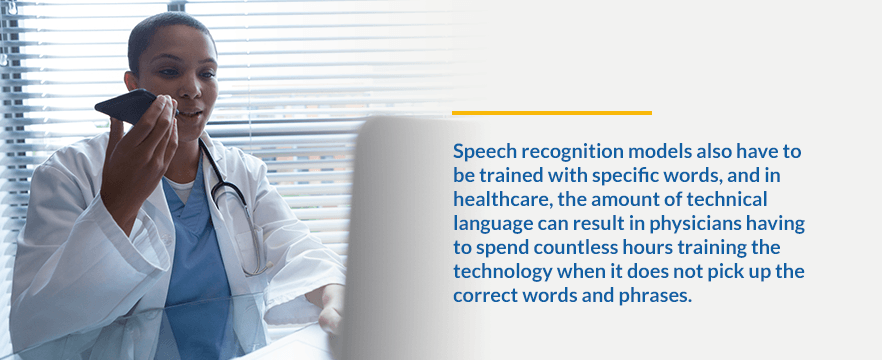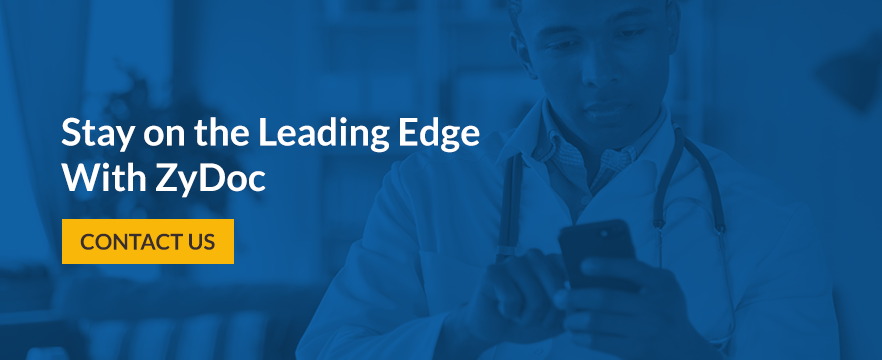How Can Artificial Neural Networks Improve Healthcare?
Mar 26, 2020 | Jonathan Maisel
All types, sizes and specialties of healthcare organizations are flocking to new applications of artificial intelligence (AI) in the pursuit of providing better patient care, reducing costs and optimizing efficiency. AI has quickly become more available and more sophisticated, offering healthcare entities and providers a variety of tools to leverage. One of these tools is the artificial neural network.
What Is an Artificial Neural Network?
An artificial neural network is a system designed to recreate the processes humans use to learn. As the name “neural” suggests, these networks are constructed with the intent to mirror the neurons of a human brain. The idea is to replicate the way people use real-world context to interpret situations and come to conclusions. An artificial neural network is created by programming standard, but very powerful, computers to behave like connected brain cells.
Neural networks make use of multiple mathematical processing layers to interpret the given information. A neural network may have just a few dozen units or millions of them, all arranged into layers. There is an input layer that receives some form of data from outside — this data may be fed to the network in specific chunks, or the network may have the capability to crawl large sources of information on its own.
Once data has been acquired through the input layer, it is altered by a series of hidden units. The more units in the network, the more it “learns” about the data, until it comes out on the output side of the network. The output is usually used to solve complex problems by finding patterns in large sets of data.
The applications of neural networks in healthcare are many. One project that has received a lot of fanfare is Google’s “DeepMind”. In 2018, DeepMind trained an artificial neural network to diagnose 50 different types of eye disease by feeding the network 3D scans of retinas. This development has the potential to speed up diagnosis in hospitals and potentially help determine the most appropriate course of treatment.
How Do Artificial Neural Networks Impact Natural Language Processing?
Natural language processing (NLP) is a field that brings together computer science, information engineering and linguistics to apply AI to the processing of human languages. Some of the everyday uses of NLP include:
- Translation applications
- Word processors that check text for grammatical accuracy
- Interactive call center applications that respond to customers’ vocal requests
- Personal assistant applications like Siri and Alexa
Human language is often ambiguous and imprecise, laden with complex characteristics that make it difficult for machines to interpret. Sarcasm, for example, relies heavily on context and tone, which are immensely challenging to convey in a way that machines can understand.
This neural network application often makes use of recurrent neural networks. This type of network is seen in smartphones in the form of predictive text keyboards. It is a connected network in which some of the layers form a loop. This loop creates an internal memory that lets prior inputs influence the resulting predictions.

How Do Artificial Neural Networks Impact the Clinical Documentation Process?
The applications of neural networks in creating clinical documentation are based mainly in speech recognition. To work well, the algorithms that process data need to be highly specific. When an AI speech recognition tool is trained, it will encounter problems when slight differences occur. For example, if a model is fed audio from people talking in a Texan accent, it may have issues detecting speech or filling in the right words when given commands by someone with a Boston accent.
Speech recognition models also have to be trained with specific words, and in healthcare, the amount of technical language can result in physicians having to spend countless hours training the technology in order for it to pick up the correct words and phrases.
Neural networks have the potential to speed up the training of speech recognition and eliminate a good deal of errors in the process. This increases the accuracy of initial dictations and reduces the need for editing by human transcriptionists.
How Will Artificial Neural Networks Improve Clinical Documentation?
There’s no doubt that artificial neural networks are the future of healthcare, but how will they improve the technology used in creating clinical documentation? Here are four of the main benefits these networks will provide in the future:
1. Greater Accuracy
Speech recognition still has serious issues surrounding the accuracy of documentation produced. Clinical documentation created through the use of speech recognition software has an error rate of 7.4 percent, which can result in lives lost in certain cases. Current medical transcription technology that uses human transcriptionists to check for errors has an accuracy rate of 99.6 percent, but as neural networks continue to improve, the need for human input will eventually be reduced.
2. Lower Costs
Without the need to involve humans in the process of speech recognition, costs for services will drop. Clinical documentation companies who provide transcription services will not have to hire people and provide the extensive HIPAA training required to provide their services responsibly, and they will pass those savings on to healthcare organizations.
3. Faster Documentation
ZyDoc’s unique speech recognition and transcriptionist service already leads the industry in documentation turnaround time. Physicians can dictate their notes and have them inserted into their EHR in as little as two hours for the vast majority of jobs.
With the aid of neural networks, highly accurate dictations will become instantaneous. Doctors will be able to watch as their dictation is filled into the EHR accurately and in real-time.
4. Increased Clinical Support
Neural networks are already being used to help physicians make decisions about their patients’ care. In the coming years, that technology will eventually be adapted and included in the medical transcription field, potentially analyzing the documentation produced and making suggestions about better wording or alerting physicians to potential mistakes in their charting.

Optimize Your Clinical Documentation Workflow With ZyDoc
Although the future potential applications and challenges of neural networks in healthcare are significant, there’s no better technology today for documentation than digital medical transcription with ZyDoc.
Our HIPAA-compliant medical transcription service allows doctors to create naturally-flowing notes through dictation, creating more time for physicians to spend in face-to-face interactions with their patients. Without the burden of having to enter documentation manually or edit charts produced with inaccurate speech recognition, doctors face less burnout and can maximize their productivity.
To learn more about ZyDoc’s cutting-edge clinical documentation services and try us out by dictating unlimited notes for 14 days, call 1-800-546-5633. Or, to see which of our service levels is right for your healthcare organization, browse our plans and pricing. Better quality documentation leads to better quality care, and ZyDoc is ready to help you optimize your workflow.
